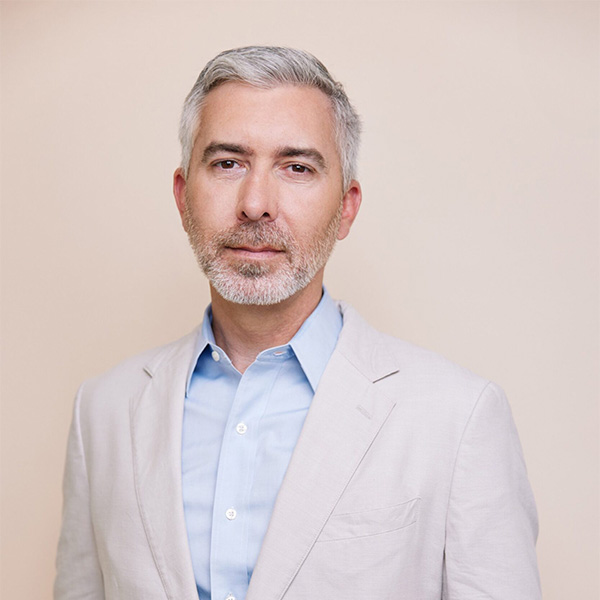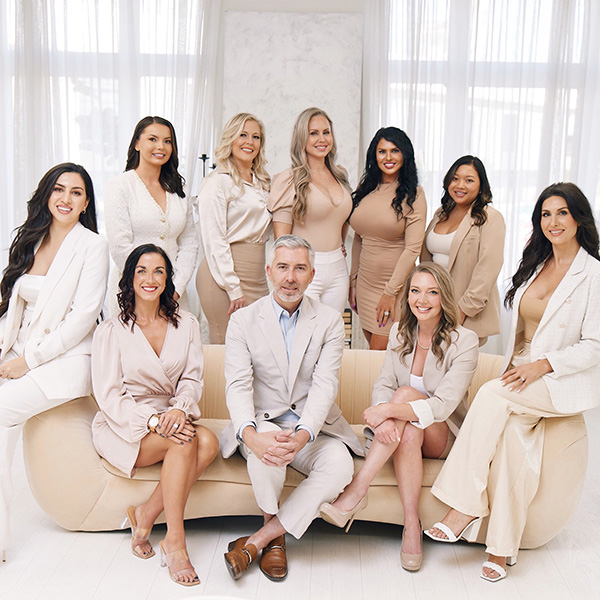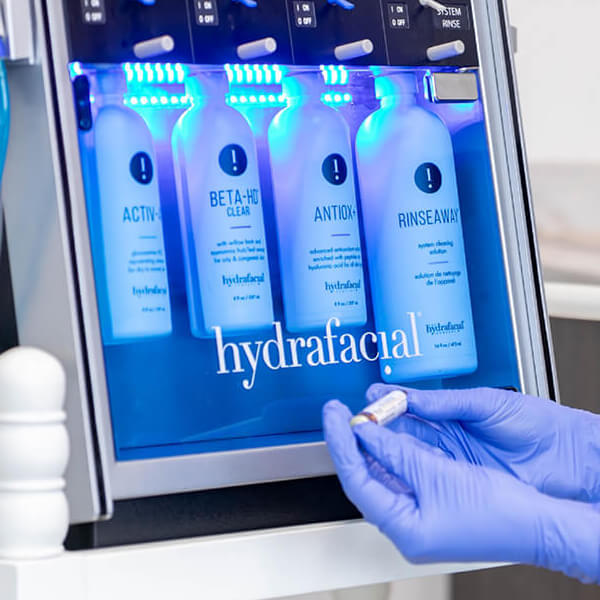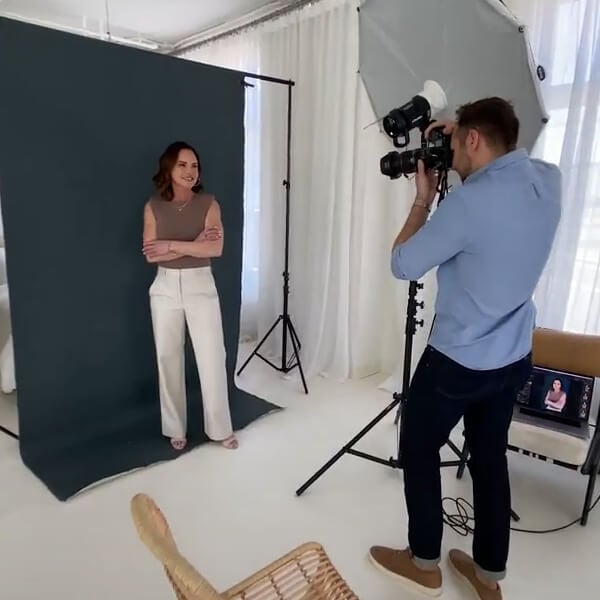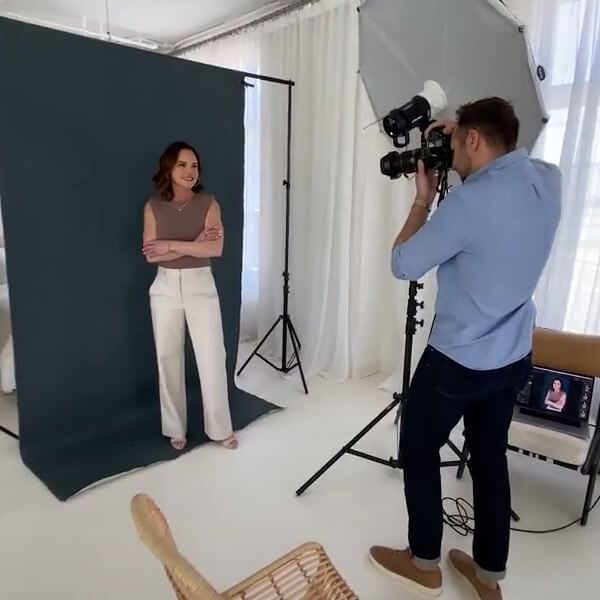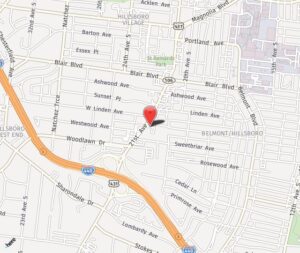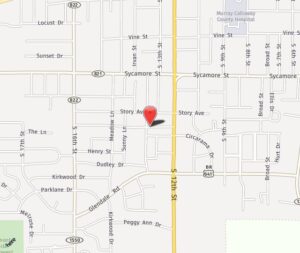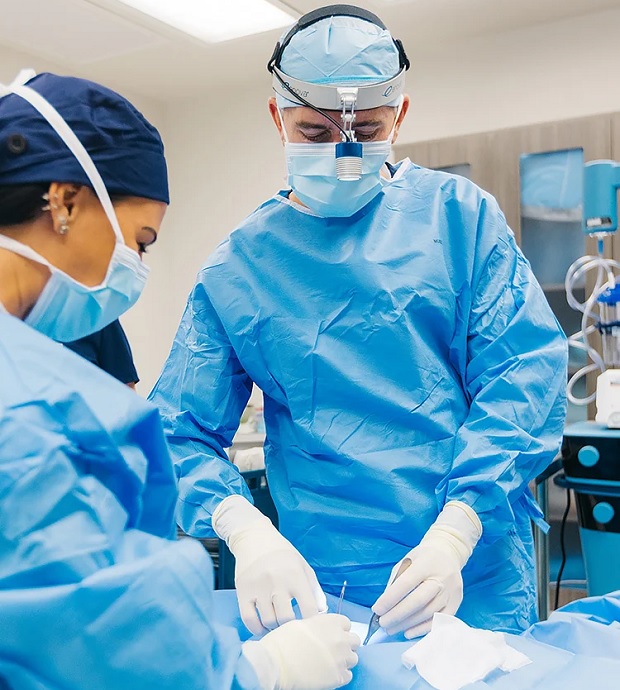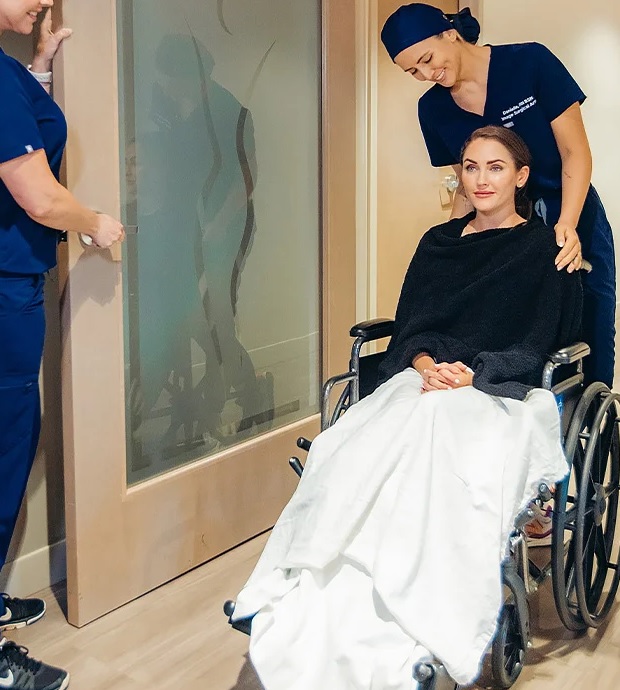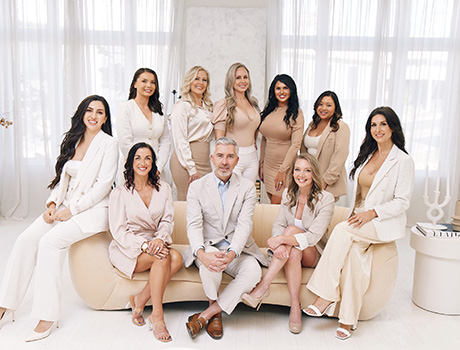Liposuction in Nashville, TN
Entrust your cosmetic experience to Dr. Harris and the Image Surgical Arts team of experienced professionals
Benefits of Liposuction
Liposuction can significantly enhance your physical appearance by removing stubborn fat that doesn’t respond to diet and exercise. By sculpting and contouring the body, it creates a more aesthetically pleasing and proportional silhouette. This transformation often leads to a boost in self-confidence, as patients feel more comfortable and positive about their body image.
Preparing for Liposuction
Preparing effectively for liposuction is crucial to ensure a successful procedure and optimal recovery. Your journey begins with a thorough consultation with Dr. Harris. During this session, you will discuss your aesthetic goals, medical history, and any previous surgeries. Dr. Harris then evaluates the areas where you desire fat reduction to tailor the procedure specifically to your needs.
Prior to your procedure, Dr. Harris and his team will provide detailed pre-surgical instructions, which may include:
- Medication Adjustments: You may need to avoid certain medications such as aspirin, anti-inflammatory drugs, and herbal supplements that can increase bleeding risk.
- Nutrition: Eating a healthy diet rich in vitamins and minerals is recommended to boost your body’s healing ability.
- Smoking Cessation: If you smoke, it's important to quit at least a few weeks (ideally months) before and after the surgery to enhance your healing process and reduce complications.
- Arrange for Assistance: Plan to have someone drive you to and from the surgery and stay with you for at least the first night post-procedure. This is important for your safety and comfort as you start your recovery.
Ensuring Patient Safety
At Image Surgical Arts, patient safety is our top priority. Dr. Harris adheres to stringent safety protocols and uses state-of-the-art technology to ensure the highest standards of care are met. Our team is highly trained in liposuction techniques, and we continuously update our practices based on the latest industry standards and safety guidelines to ensure that each procedure is safe, effective, and yields the best possible outcomes.
Frequently Asked Questions
Liposuction is the process by which fat cells are removed from the body using a cannula (very thin tube) attached to a suction device. There are many different ways in which liposuction can be performed. However, the end goal of all forms of liposuction is the removal of unwanted fat cells.
We can remove a relatively large volume of fat, or we can treat smaller areas to provide “finishing touch” contouring. We can also address multiple areas of the body in a single surgical procedure.
Introduced in the 70s, liposuction has evolved tremendously over the years. Technology has improved to provide enhanced results compared to what was previously possible. Years of scientific research in the field of liposuction surgery have made the procedure very safe when performed appropriately. Post-operative care and recommendations have also advanced to allow shorter recovery times and better-than-ever results.
Numerous areas of the body can be treated with liposuction -- essentially, anywhere with unwanted fat, as long as it is outside the muscle layer. For example, the fatty tissue of the abdomen can be removed as long it is above the “six-pack” muscles.
However, the intra-abdominal (visceral) fat cannot be removed with liposuction because it is underneath the muscle layer and surrounds the vital organs inside your abdomen.
We can use liposuction to slim and improve contouring and definition on the:
- Neck
- Chest and breasts
- Abdomen and waist
- Upper arms
- Back
- Bra-line
- Flanks (love handles)
- Hips
- Thighs
At Image Surgical Arts, we consider there to be three different types of liposuction:
1. Low Definition - or “volume reduction” liposuction: with this type, we are not attempting to etch muscles or provide muscle definition, rather the goal is simply to remove unwanted fat pockets.
The goal is simply to remove unwanted fat pockets. This is the most common procedure performed in the vast majority of liposuction clinics. At Image Surgical Arts, to provide the best possible results we nearly always recommend volume reduction liposuction with more invasive surgical procedures like a tummy tuck or facelift.
2. Medium Definition - The second type of liposuction we perform is “medium definition” liposuction. This is a very popular procedure among our female patients. For medium definition liposuction, we combine volume reduction with a moderate amount of muscle etching. In women, we focus on the vertical lines of the abdomen and the vertical line in the center of the abdomen above the belly button. The goal is to create the illusion of a longer torso to provide a taller and slimmer appearance.
We also create the “V to the V'' appearance. For women who also wish to undergo a Brazilian buttock augmentation, we can reinject the fat removed from the abdomen into the buttocks to achieve both goals during the same procedure.
3. High Definition - The third type of liposuction performed at Image is “high definition” liposuction. This is increasingly popular with many of our male patients. This technique combines volume reduction with aggressive muscle etching -- most commonly the six-pack muscles, the latissimus dorsi (lats), and the obliques (to create the “V to the P” look). We can also use this technique to enhance the appearance of muscle groups in the shoulders, chest and triceps.
High definition is much more than liposuction, it is true liposculpting. Often, we will use the fat removed to reinject at precise locations to increase muscle size. This is especially popular in the shoulders and chest.
At Image, we use advanced VASER technology that allows us to safely provide muscle etching and high definition body sculpting.
VASER uses ultrasound technology to gently dislodge the fat cells while leaving surrounding tissues more intact and less damaged. It is particularly important to cause as little damage as possible to the lymphatic vessels. This allows for faster recovery and decreased postoperative swelling. VASER technology also enables us to safely remove the most superficial layers of fat cells, which allows us to produce the etching our patients desire.
Although all levels of liposuction require considerable surgical skill to produce optimal results, high definition liposuction requires specialized training, deep knowledge of the muscle groups, and an artist’s eye. We are proud to be the first practice in middle Tennessee to offer true high definition liposuction, and even more proud that our Dr. Brady Harris is a national leader in this field. At Image, you know you’re getting the best of the best.
Liposuction only removes fat. It does not tighten skin. In fact, when a provider is overly aggressive with liposuction, or in patients who may not be optimal candidates for liposuction, the skin may be left looking saggier than it was prior to their procedure. That is why it is important to consider the addition of a skin tightening procedure to accompany your liposuction surgery.
Think about a balloon that is fully inflated. The outside of the balloon is tight and firm when full of air. Now imagine you let all the air out of the balloon. It becomes loose and floppy. Removing fat from beneath the skin is similar to letting the air out of the balloon – the volume that held it taut is now gone.
At Image, we evaluate each patient personally and then provide a customized treatment plan based on your own goals. Some patients are great liposuction candidates and may not need skin tightening. There are several factors that go into these decisions, such as skin quality and elasticity. Thicker, more youthful skin will have the ability to contract better than thinner skin with less elasticity. The amount of volume to be removed is also an important consideration in deciding whether or not to add skin tightening. Skin tightening can be achieved in three ways:
1. Add Volume - by reinjecting the fat that has been removed from another part of the body, we add volume that can fill up and tighten loose skin. The Brazilian buttock lift is a common example of this technique. Another way we can add volume to tighten skin is by using an implant such as in a breast augmentation.
2. Remove Excess Skin - some of the most common examples of this technique include a tummy tuck, breast lift, and facelift.
3. Apply Heat - this can cause skin to retract and tighten, much the way cellophane will shrink when heat is applied. At Image Surgical Arts, we use Renuvion technology to tighten skin following liposuction. Renuvion works through two different modalities simultaneously -- direct heating and radiofrequency heating delivered via helium plasma. Both of these modalities remodel existing collagen and stimulate the body to create new collagen.
After your liposuction procedure, we insert a small probe about the diameter of a pencil under the skin to complete Renuvion treatment. Generally, our patients see some immediate skin improvement, but it takes approximately nine months to see final results as your body continues to regenerate and create collagen.
Liposuction is an outpatient procedure, performed in our state-of-the-art surgery center, so there is no need for an overnight hospital stay.
The first step, of course, is a personal consultation with Dr. Harris. You will decide if liposuction is the right choice for you, and Dr. Harris will develop a personalized treatment plan. You will schedule your procedure, and we will welcome you to Image Surgical Arts on the appointed day. Here’s what will happen next:
- We will bring you back to our pre-operative area. Depending on whether you have opted for sedation or to have your procedure performed under local anesthesia, we may insert an IV. We will fill out the requisite paperwork, and Dr. Harris will once again go over any and all concerns, expectations, or last-minute questions you may have.
- Dr. Harris will take “before” photographs and will place markings on your body to serve as his road map for fat removal and re-contouring. When that is complete, it’s time for your procedure!
- We will take you into our state-of-the-art operating suite, where we will clean your skin and cover the areas around the surgical field with sterile towels and drapes.
- Dr. Harris will numb your skin and then make tiny incisions to allow insertion of the cannula through which tumescent will be infused into the areas to be treated. Tumescent is a saltwater solution that has lidocaine, bicarbonate and epinephrine mixed into it. Lidocaine is used to numb the area(s) to be treated. Bicarbonate is used to decrease discomfort from the lidocaine in the tumescent fluid. The epinephrine will cause the blood vessels in the area to constrict to help reduce any bleeding that may occur. The constricted vessels also help to decrease the amount of lidocaine absorbed into the bloodstream.
- Once the tumescent solution has had time to take effect, Dr. Harris will use VASER technology to gently disrupt the fatty tissue in the areas that are to be treated. The same incision sites are used for each step of the process.
- The next step is the actual liposuction itself. Small cannulas are used to remove the unwanted fat. Our patients who opt to not be sedated will get to literally see their fat emptying into a suction container! If you’re getting high definition liposuction, Dr. Harris will selectively remove both superficial and deep fat cells to sculpt the amount of definition you desire.
- Once liposuction is complete, if your treatment plan includes skin tightening with Renuvion, Dr. Harris will gently insert the device under the skin through the same incisions he used for liposuction. If your treatment plan involves surgical removal of excess skin (for example, a tummy tuck), then Dr. Harris and the team will begin that process instead.
- Once all is complete, sterile gauze pads will be applied and a compression garment will be put in place. From there, it is off to the recovery room and soon thereafter back home! Depending on the details of your procedure, it might take one to four hours overall.
Following your procedure, we will usually want to see you back the next day for a follow-up visit. At this visit, we will examine the entire operative site to make sure all is well and then apply fresh gauze. Dr. Harris’s primary concern is ALWAYS patient safety, and this is just another step that we take to make sure you have the best experience possible.
Additional follow-up visits are typically scheduled at one week, six weeks, and four months after your procedure. As always, our team is available to answer any questions or concerns at any time before and after your procedure. The more comfortable you are with all the details, the more comfortable and confident you will be as you recover.
You can take steps ahead of time to ensure your return home following liposuction is as easy and comfortable as possible:
- Set aside a room or space within your home that can serve as your recovery headquarters, so you can rest and relax. Be sure water, things to watch or read, etc. are close at hand.
- Arrange for someone to drop you off and pick you up again later, as you will not be able to drive yourself home from the procedure. This person (or someone else) must also stay with you at least overnight, but for a day or two is best. You don’t want to put any pressure on your body! This is especially true if you have had high definition liposuction, as this procedure is more invasive and more intense.
- Perhaps the most important pre-procedure step you can take is to maintain your healthy lifestyle. Good nutrition and exercise prepare your body for the changes ahead and will help your recovery go faster and more smoothly. Non-smokers are the best candidates for liposuction, but if you do smoke, you will have to quit at least two weeks before your procedure and stay away from smoking for a time afterward. Smoking constricts blood flow, which hampers your body’s ability to heal.
You may be a good candidate for liposuction if you are bothered by one or more areas of stubborn fat that diet and exercise have failed to eliminate. This procedure can improve your appearance and boost your self-confidence, but it is not meant to serve as a weight-loss tool.
The best candidates for a liposuction procedure have several qualities in common:
- Since liposuction is an entirely elective procedure, patients should be generally healthy with no major underlying medical conditions. A generally healthy lifestyle prior to your procedure is important for achieving the best results, and continuing a healthy lifestyle after your procedure is important for maintaining your results.
- The most successful outcomes occur in patients with the majority of fat outside the muscle. For example, patients with “beer belly” will not benefit as much as patients who have a flatter abdomen. This is because the “beer belly” look comes from having the majority of your fat underneath the muscles, inside the abdominal cavity where liposuction cannot be performed.
- Non-smokers are better candidates for any type of surgical procedure because smoking hinders the recovery process.
- Realistic expectations of results. We can effect significant change to enhance your figure or physique, but there is no such thing as the “perfect” body.
Patients with loose skin or who may have loose skin after fat is removed are not good candidates for liposuction alone because results will be disappointing. For these patients, Dr. Harris recommends adding a skin tightening procedure to achieve smoother, firmer skin surface as well as the improved contouring that comes with fat removal.
Renuvion skin tightening is a good choice for those with mild to moderate skin laxity. However, severe skin laxity requires a more aggressive approach such as an abdominoplasty (tummy tuck) or other procedure to surgically remove excess skin. Skin tightening can be performed as a second step during your liposuction procedure.
Although rare, complications and unwanted outcomes can occur with liposuction just as they can with any surgical procedure. Always be very wary if you speak with a liposuction surgeon or clinic that tells you they have never had a complication or that their results are always perfect. That should be an immediate red flag for a patient.
Any time the skin is pierced, there is always the risk of bleeding, infection and injury to surrounding structures. Hematomas (a collection of blood under the skin) are a rare but potentially serious complication that can occur. We take precautions against bleeding and hematomas by infusing the treatment area with a tumescent solution containing epinephrine (also called adrenalin), which causes blood vessels in the area of liposuction to contract. Also, by using VASER technology, we can remove the fat cells more gently. This reduces the risk of damage to other structures such as blood vessels.
Infection occurs when bacteria or, more rarely, other microorganisms are introduced to the body. They can overwhelm your immune system, meaning your body has a difficult time killing those microorganisms. We all have innumerable bacteria on our skin all the time, so to help prevent infection, we completely clean your skin with products that will kill any surface bacteria. We also give antibiotics prior to your procedure and send you home on antibiotics to help prevent infection.
Injury to surrounding structures is a very rare complication that can have a wide range of consequences depending on what is injured. In the worst-case scenario, the tumescent cannula or liposuction cannula can pierce through the muscle and injure an internal organ or a large blood vessel. This may require hospitalization or additional surgery to repair. Again, this is a very rare occurrence but it is something we want our patients to know is possible.
On the less serious end of the scale, and much more common (although still rare), small injuries to small nerves that provide sensation to the skin may occur. This can lead to certain areas of your skin feeling numb. Rarely, if ever, is the numbness permanent.
One of the most common issues seen after liposuction is called a seroma. A seroma is a build-up of fluid underneath the skin where liposuction was performed. This is not a particularly dangerous situation, but rather more of an annoyance. Often, seromas will need to be drained – occasionally more than once – in order to resolve completely.
Blood clots have occasionally been reported. These occur more commonly in procedures that take an extended period of time and in patients who have a predisposition to easily forming blood clots. The best way to prevent a blood clot is walking early and often after your procedure. We also use various devices during surgery to help prevent blood clots (especially if you are under general anesthesia for your procedure).
There are also risks associated with anesthesia and medications including allergic reactions, nausea and vomiting. Again, complications from liposuction procedures are uncommon and we take every possible precaution to prevent any of these (or others) from happening. At Image Surgical Arts, your safety is always our number one priority.
Recovery from liposuction is generally pretty straightforward. It will certainly vary based on the areas you have treated, how much fat we are able to remove, and whether you’re having a low, medium, or high definition procedure.
Most of our patients describe post-liposuction discomfort as soreness rather than painful – much as if you went to the gym and worked out really hard. We typically send patients home with several medicines after their procedure to help with any discomfort or soreness you may experience.
You can expect to have some bruising and swelling following your procedure, but it should be mild. If possible, you should keep the treated area elevated when you’re at rest, but we do want you to get up and take short walks frequently after your procedure. This will help reduce the soreness and promote good circulation to help prevent blood clots and speed healing. Moving around will help you stay positive, too.
You can also expect to have a significant amount of drainage following your liposuction procedure. This is perfectly normal and will usually stop after two to three days. The majority of this drainage is the remaining tumescent fluid we use during the procedure that does not get removed at the time of the liposuction. There is almost always more than you will expect. We will remind you of this several times before and after your procedure to give you peace of mind that it is normal.
While bruising usually goes away within a week, swelling will last longer. A small amount of residual swelling may remain up to four months after your procedure. However, about 75% of the swelling is usually resolved within four to six weeks. You will have to wear an elasticized compression garment for a specified period of time depending on the specifics of your procedure. This supports your skin and underlying tissues while they are healing and helps reduce swelling.
You will see some immediate improvement after your procedure, but as the swelling continues to resolve, your results will become more visible. Arnika (a.k.a. bromoline) is a great herbal supplement to help speed the resolution of bruising and swelling and is available for purchase at our office, if desired. If Renuvion skin tightening is added to your liposuction procedure, full results from the skin tightening will be apparent at nine months after your procedure.
Your incisions will heal completely in 2-3 weeks. Because Dr. Harris makes only very small incisions to perform liposuction (and uses those same incisions to perform Renuvion, if that’s part of your procedure), you will have minimal scarring. Dr. Harris takes great care in this regard as well as in the details of your liposuction/sculpting procedure itself, because he understands your ultimate goal is great-looking results.
You should be able to return to your normal routine within a few days, depending on the type and extent of liposuction performed. However, you will have to avoid strenuous exercise and lifting for several weeks to give your body plenty of time to fully heal with the best possible results. While the recovery even for large areas is pretty short, smaller areas of liposuction such as arms, thighs and the neck are even shorter. We have had many patients who have gone shopping or even out to dinner that same night.
The timeframe for recovery is always a bit different for every patient because every person and procedure is different. At Image Surgical Arts, we do everything we can to make your recovery process as fast and smooth as possible and to provide you with the best experience possible.
The most important thing you can do to ensure a speedy, comfortable recovery is to follow doctor’s orders! Everything we ask you to do – or not do – is specifically designed to enhance your recovery. We will give you written instructions to take home for post-operative care, and our team will go over those with you before you leave. And, of course, we are always available to answer questions or address any concerns you may have.
Because every liposuction procedure is individually tailored to your concerns and desired outcomes, there is no set fee for the surgery. For example, a simpler low definition procedure will cost less than high definition liposuction, and adding Renuvion or surgical skin tightening will further increase total cost.
With that in mind, approximate cost of liposuction procedures at Image Surgical Arts typically ranges from $1,500 to $25,000. This is all-inclusive, covering:
- Surgeon’s fees
- Anesthesia
- Operating room fees
- Surgical supplies
- Follow-up visits
If there will be additional costs for prescription medications, lab fees, post-surgical garments, etc., we will disclose that up front so you will have no surprises. You can discuss cost during your personal consultation with Dr. Harris, and we will give you a detailed estimate of charges for your specific procedure before you decide whether or not to move forward.
Medical insurance does not typically cover cosmetic procedures. But we do offer several financing options for our cosmetic procedures.
Aside from determining whether or not to undergo a cosmetic enhancement procedure, the most important decision you will make is picking your surgeon. You are literally putting your body in their hands, and it is their knowledge, skill, and experience that will determine your outcome.
Look for a surgeon who is board-certified. Surgeons are not required to become board-certified, nor do they have to specialize in order to perform cosmetic procedures. But these things demonstrate ongoing commitment to the highest skill, quality, and patient care standards. You should expect no less. Dr. Brady Harris is triple board-certified.
You want to choose a surgeon who has a special interest in liposuction and that takes a significant amount of pride in his or her work. After all, they may be renowned for some other type of procedure, but that doesn’t necessarily mean they excel at liposuction. Ask how many liposuction procedures they have successfully accomplished – especially if you’re interested in achieving medium or high definition results – and ask to see before and after photos of those patients.
Dr. Harris has dedicated his entire career to cosmetic surgery, and liposuction is a major aspect of his practice. He has become the region’s premiere surgeon for high definition liposuction and body sculpting. He takes tremendous pride in what he is able to achieve for each patient by combining the latest in science and artistry. He is a frequent lecturer worldwide on the latest techniques and technologies in the field of liposuction. He has lectured at the World Academy of Cosmetic Surgery, the American Academy of Cosmetic Surgery, and the World Congress on Liposuction.
Results! That’s the big concern on anyone’s mind who is considering cosmetic enhancement. What will I look like afterward? How much change can I make? What can liposuction do for me? Successful procedures start with realistic expectations, and every patient’s body and goals are different, so what will be optimal for you will not be exactly the same as for someone else.
However, you can get a very good idea of what various types of liposuction can or cannot do by reviewing before and after photos of real patients. Because everyone is different, the more pictures you examine, the better. It is easy to find photos online, and that’s a great way to get started. Look for patients who have undergone the type of liposuction you are considering, in the same part(s) of their body. Look for patients who are similar to you in age and gender as well, because those factors can affect procedure outcomes.
Keep in mind that the goal is always improvement. Perfection does not exist! Some of the “after” photos may show dramatic change, whereas some may look less-than-perfect to you, but look closely at the “before” photo and you should easily see the comparative improvement.
Once you have a general idea of what liposuction can do, it is critical to review before and after photos of actual patients treated by the surgeon you are considering. What kind of results can he or she produce? Again, zero in on patients similar to you who had similar concerns prior to their procedure. Do the results look naturally smooth and contoured? You want change, but you don’t want to look overdone.
Ultimately, it will be up to you to maintain whatever results liposuction produces. Fat that is removed will not return, but if you gain weight that will negatively affect your results. Maintaining a regimen of healthy diet and exercise will help keep your weight stable and your body looking great.
